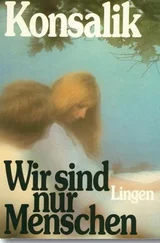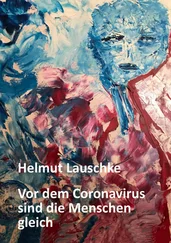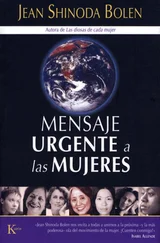Anon., ‘The Photography of the Invisible’, Quarterly Review , 183, no. 366 (Apr. 1896), 496–507.
Anon., ‘Professor Röntgen Interviewed’, American Monthly Review of Reviews , 13 (Jan.–June 1896), 437.
Anon., ‘Push-Button War’, Newsweek , 26 (27 Aug. 1945), 25.
Anon., ‘Radioactivity’, Athenaeum , no. 3, 995 (21 May 1904), 657–8.
Anon., ‘The Revelations of Radium’, Edinburgh Review , 198 (Oct. 1903), 374–99.
Anon., ‘Science and Literature’, The Dial , 42 (1 May 1907), 274–5.
Anon., ‘Science on the War Path’, Science , 43, no. 1, 106 (10 Mar. 1916),
350–52. Anon., ‘Superbomb’, Newsweek (30 Oct. 1961), 44–5.
Anon., ‘The “Think Factories” ’, New Republic (15 Jan. 1962), 33–40.
Anon., ‘The Use of Asphyxiating Gas’, The Scientific Monthly , 7, no. 4 (Oct. 1918), 381–3.
Anon., ‘Warfare of the Future: The Radium Destroyer’, The Electrical Experimenter (Nov. 1915), 315.
Anon., ‘A Weapon to Kill Everybody… Or Just Cold-War Bluster?’, US News and World Report (28 Sep. 1964), 8.
Anon., ‘The World Set Free’, New Statesman (5 Feb. 1916), 415–16.
Arnold, James R., ‘The Hydrogen–Cobalt Bomb’, BAS , 6 (Oct. 1950), 290–92.
Arns, Robert G., ‘The High-Vacuum X-Ray Tube: Technological Change in Social Context’, Technology and Culture , 38 (1997), 852–90.
Ashley, Mike, The Time Machines: The Story of the Science-Fiction Pulp Magazines from the Beginning to 1950 (Liverpool University Press, 2000).
—— Transformations: The Story of the Science-Fiction Magazines from 1950 to 1970 (Liverpool University Press, 2005).
Badash, Lawrence, Radioactivity in America: Growth and Decay of a Science (Baltimore: Johns Hopkins University Press, 1979).
Baker, Ray Stannard, ‘Liquid Air’, Strand Magazine , 17 (1899), 459–68.
Balmer, Brian, ‘How Does an Accident Become an Experiment?’, Science as Culture , 13 (2 June 2004), 197–228.
Barnaby, Frank, How to Build a Nuclear Bomb and Other Weapons of Mass Destruction (London: Granta, 2003).
Barnaby, Wendy, The Plague Makers: The Secret World of Biological Warfare (New York: Continuum, 2000).
Bartter, Martha A., The Way to Ground Zero: The Atomic Bomb in American Science Fiction (New York: Greenwood, 1988).
Baskerville, Chas, ‘“Gas” in this War: The Vast Development of a New Military Weapon’, American Review of Reviews , 58 (Sep. 1918), 273–80.
Battersby, H. F. Prevost, ‘The New Mechanism of War’, Edinburgh Review , 221 (Apr. 1915), 385–403.
Baxter, John, Stanley Kubrick: A Biography (London: HarperCollins, 1997).
Benn, Tony, Out of the Wilderness: Diaries 1963–67 (London: Hutchinson, 1987).
—— Years of Hope: Diaries, Letters and Papers 1940–1962 , ed. Ruth Winstone (London: Hutchinson, 1994).
Bennett, Charles H., ‘Demons, Engines and the Second Law’, Scientific American , 257 (Nov. 1987), 88–96.
Berman, Marshall, All That Is Solid Melts into Air: The Experience of Modernity (London: Verso, 1995).
Bernstein, Barton J., ‘Why We Didn’t Use Poison Gas in World War II’, American Heritage , 36 (1985), 40–45.
—— ‘Introduction’, in Leo Szilard, The Voice of the Dolphins and Other Stories (Stanford University Press, 1992), 3–43.
—— ‘Truman and the A-bomb: Targeting Noncombatants, Using the Bomb, and his Defending the “Decision’ ”, Journal of Military History , 62 (1998), 547–70.
Bernstein, Jeremy, Hans Bethe: Prophet of Energy (New York: Basic, 1980).
—— Oppenheimer: Portrait of an Enigma (London: Duckworth, 2004).
Bess, Michael, Realism, Utopia, and the Mushroom Cloud: Four Activist Intellectuals and their Strategies for Peace, 1945–1989 (University of Chicago Press, 1993).
Bethe, Hans, Brown, Harrison, Seitz, Frederickand Szilard, Leo, ‘The Facts about the Hydrogen Bomb’, BAS , 6 (Apr. 1950), 106–9, 126–7.
Bickel, Lennard, The Deadly Element: The Story of Uranium (London: Macmillan, 1980).
Bilstein, Roger, Flight in America 1900–1983: From the Wrights to the Astronauts (Baltimore: Johns Hopkins University Press, 1984).
Bird, Kai and Lifschultz, Lawrence, Hiroshima’s Shadow: Writings on the Denial of History and the Smithsonian Controversy (Stony Creek, Conn.: Pamphleteer’s Press, 1998).
Black, Jeremy, War: Past, Present & Future (New York: St Martin’s, 2000).
Bleich, Alan Ralph, The Story of X-Rays from Röntgen to Isotopes (New York: Dover, 1960).
Born, G. V. R., ‘The Wide-Ranging Family History of Max Born’, Notes & Records of the Royal Society , 56, no. 2 (May 2002), 219–62.
Born, Max, My Life: Recollections of a Nobel Laureate (London: Taylor & Francis, 1978; 1st edn 1975).
—— The Born–Einstein Letters 1916–1955: Friendship, Politics and Physics in Uncertain Times , trans. Irene Born (London: Macmillan, 2005; 1st edn 1971).
Bourgin, Simon, ‘Those Irresistible Hungarians’, Harper’s , 221 (Nov. 1960), 69–74.
Boyer, Paul, By the Bomb’s Early Light: American Thought and Culture at the Dawn of the Atomic Age (Chapel Hill, NC: University of North Carolina Press, 1994).
Brian, Denis, Einstein: A Life (New York: Wiley, 1996).
Brians, Paul, Nuclear Holocausts: Atomic War in Fiction 1895–1984 (Kent State University Press, 1987).
Brokoff, Jürgen, Die Apokalypse in der Weimarer Republik (Munich: Wilhelm Fink, 2001).
Broks, Peter, Media Science Before the Great War (Basingstoke: Macmillan, 1996).
Bronowski, J., The Ascent of Man (London: BookClub Associates, 1979; 1st edn 1973).
Brosnan, John, Future Tense: The Cinema of Science Fiction (New York: St Martin’s, 1978).
Brown, Harrison, ‘The 20th Year’, BAS , 18 (Dec. 1962), 2–3.
Bundy, McGeorge, ‘The Missed Chance to Stop the H-Bomb’, New York Review of Books , 29 (13 May 1982), 13–21.
Burchett, Wilfred, Shadows of Hiroshima (London: Verso, 1983).
Burgess, George K., ‘Applications of Science to Warfare in France’, The
Scientific Monthly , 5, no. 4 (Oct. 1917), 289–97.
Canaday, John, The Nuclear Muse: Literature, Physics and the First Atomic Bombs (Madison: University of Wisconsin Press, 2000).
Caputi, Jane, ‘Nuclear Visions’, American Quarterly , 47 (Mar. 1995), 165–75.
Carpenter, Charles A., Dramatists and the Bomb: American and British Playwrights Confront the Nuclear Age, 1945–1964 (Westport, Conn.: Greenwood, 1999).
Carson, Rachel, Silent Spring (London: Hamish Hamilton, 1963).
Carter, G. B., Porton Down: 75 Years of Chemical and Biological Research (London: HMSO, 1992).
Cathcart, Brian, The Fly in the Cathedral: How a Small Group of Cambridge Scientists Won the Race to Split the Atom (London: Viking, 2004).
Caufield, Catherine, Multiple Exposures: Chronicles of the Radiation Age (London: Penguin, 1990).
Ceadel, Martin, ‘Popular Fiction and the Next War, 1918–39’, in Frank Gloversmith, ed., Class, Culture and Social Change: A New View of the 1930s (Brighton: Harvester, 1980), 161–84.
Chinnock, Frank W., Nagasaki: The Forgotten Bomb (London: George Allen & Unwin, 1970).
Clareson, Thomas D., Some Kind of Paradise: The Emergence of American Science Fiction (Westport, Conn.: Greenwood, 1985).
Читать дальше












